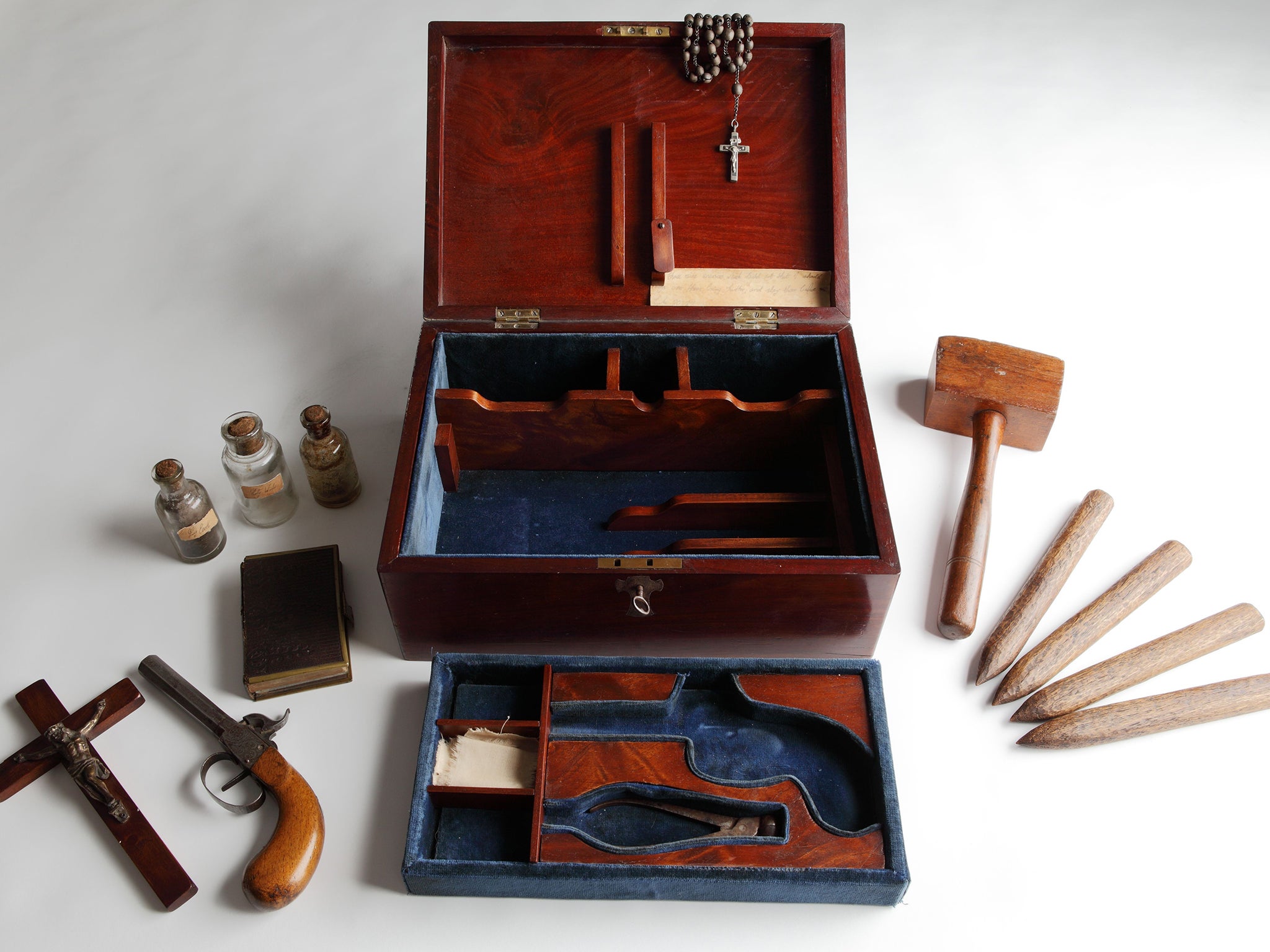'Hoax' gothic novel The Castle of Otranto goes on display at the British Library in new exhibition
The exhibition also includes treasures from Mary Shelley’s Frankenstein manuscript, work by William Blake and a Victorian vampire slaying kit

A first edition of the “hoax” novel that gave birth to gothic literature has gone on display on its 250th anniversary in a new exhibition about a genre that “continues to cast a long shadow” over culture.
Author Horace Walpole’s own copy of The Castle of Otranto, published in 1764, opens the new British Library exhibition Terror and Wonder: The Gothic Imagination.
The exhibition includes treasures from Mary Shelley’s Frankenstein manuscript, work by William Blake and a Victorian vampire slaying kit, to photographs by the award-winning Martin Parr of a weekend with the Whitby Goths this year.
Tim Pye, lead curator on the show, said: “Gothic is such an adaptable genre that it is continually relevant. There’s a universal emotion that will never go away, the love of being terrified.”
Curators at the British Library described Walpole’s novel, inspired by a dream, as “one of the most extraordinary literary hoaxes of the 18 centuries” as he claimed the anonymous publication was a re-discovered medieval story.

After the initial 500 copies of the story of ghosts, bloodshed and villainy sold out, Walpole printed a second edition under his own name and added the subtitle “a gothic story”.
Mr Pye said: “By doing that, he inadvertently coined the genre of literature that is still strong today.” That edition is also on display.
The curator said in those days the term gothic was “interchangeable for medieval. In using the term he’s saying he’s taking inspiration from medieval literature.”
Walpole thought the fiction of the day was “staid and boring. Now it seems old fashioned, but in 1764 it was the first time anyone had brought all the elements we associate with gothic together, it would have been very fresh,” Mr Pye said.
“Walpole is slightly forgotten. In the 19 century his reputation was sullied by a lot of people… He doesn’t figure in a lot of exhibitions, and many people won’t know who he is.”

The exhibition also brings together the so-called “Northanger Horrids” for the first time. In Jane Austen’s novel Northanger Abbey, the character of Isabella Thorpe recommends seven dark titles to Catherine Morland.
These included Castle of Wolfenbach by Eliza Parsons, The Midnight Bell by Francis Lathom and The Orphan of the Rhine by Eleanor Sleath.
For a century it was assumed Austen had made up the titles, but following research by novelists Michael Sadleir and Montague Summers, it emerged that “they all existed, though they are incredibly rare,” according to Mr Pye.
Alongside the manuscript of Frankenstein, which was also annotated by Shelley’s husband Percy, there are manuscripts for Dracula and Jane Eyre.
Also on display is a “vampire slaying kit” from the Royal Armouries in Leeds, whose origins are shrouded in mystery.
The exhibition looks at gothic influences across literature, film, music, art and architecture. More recent exhibits include a model from the animated film Wallace and Gromit: The Curse of the Were-Rabbit and a dress by Alexander McQueen.
Join our commenting forum
Join thought-provoking conversations, follow other Independent readers and see their replies
Comments